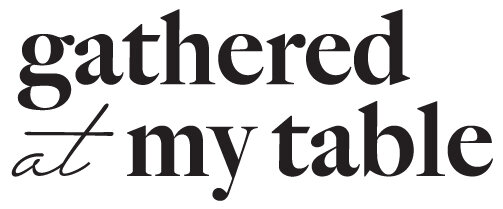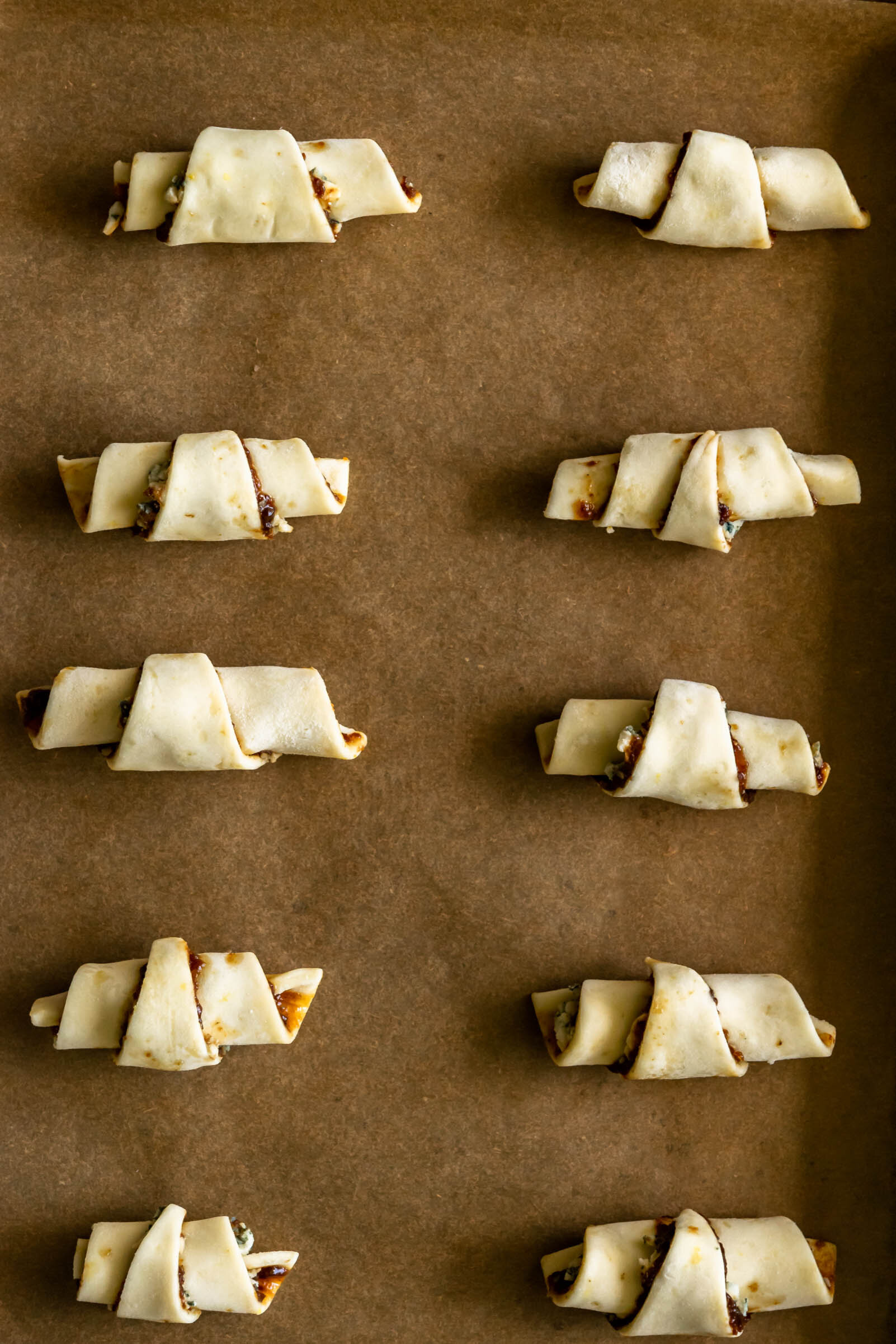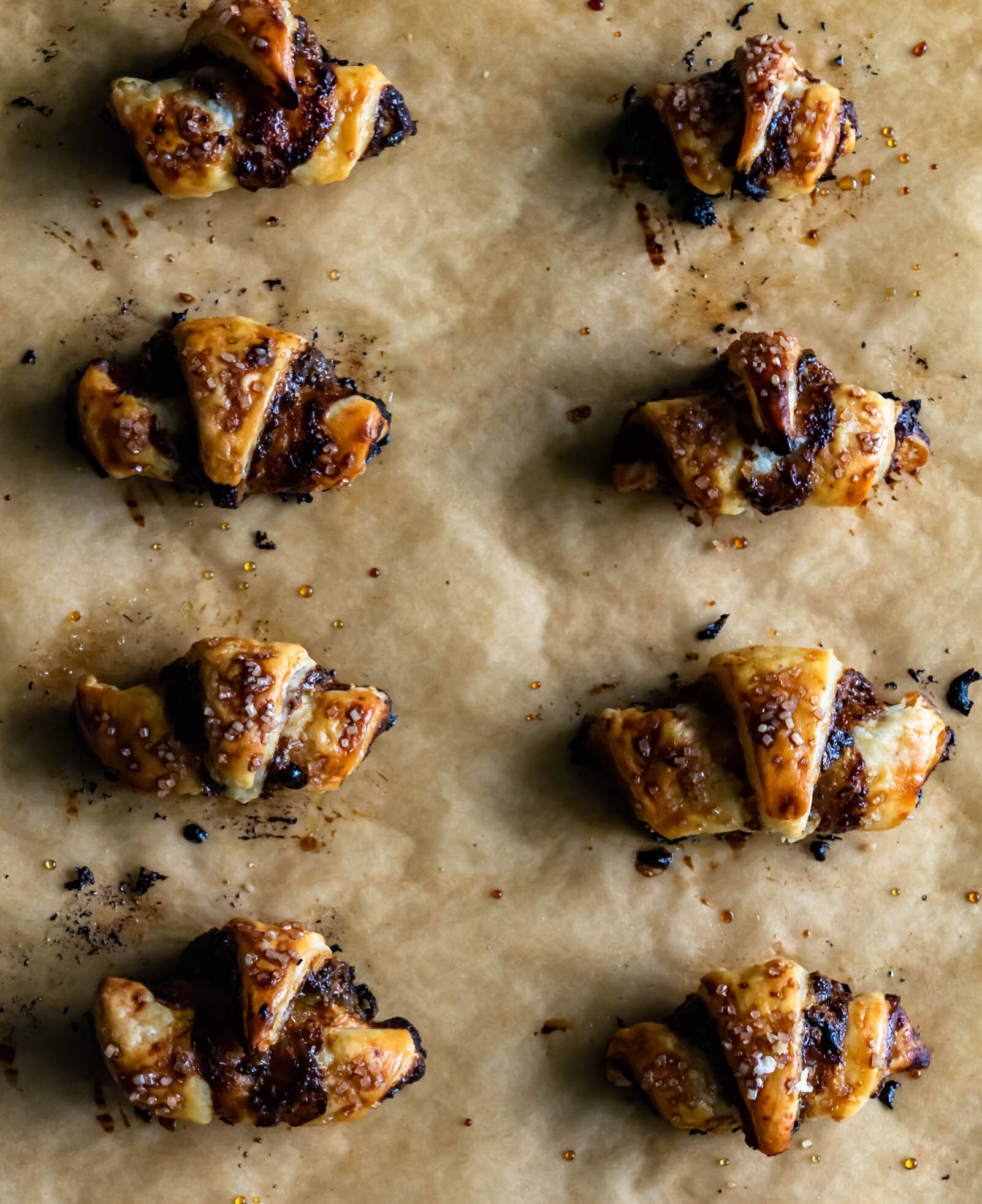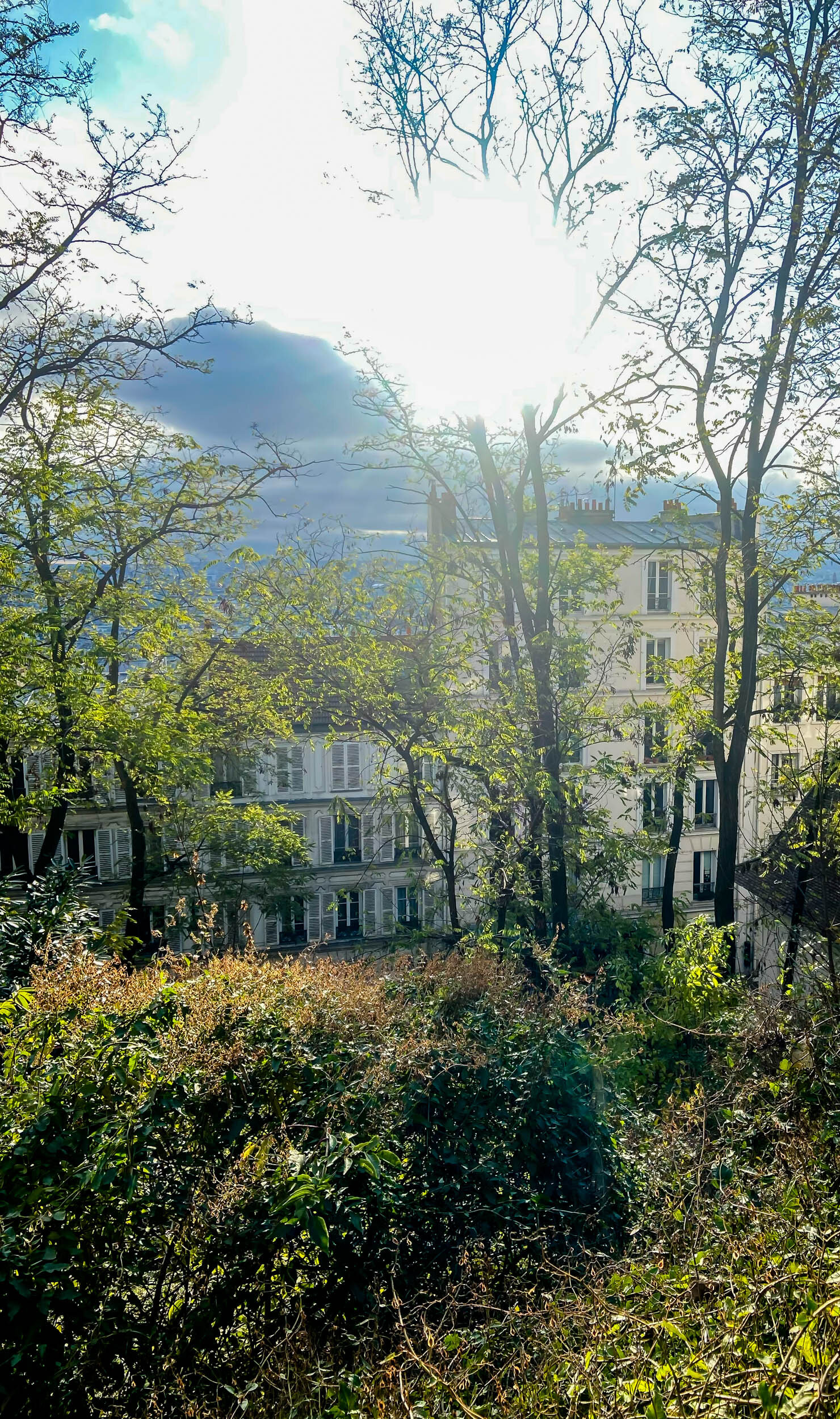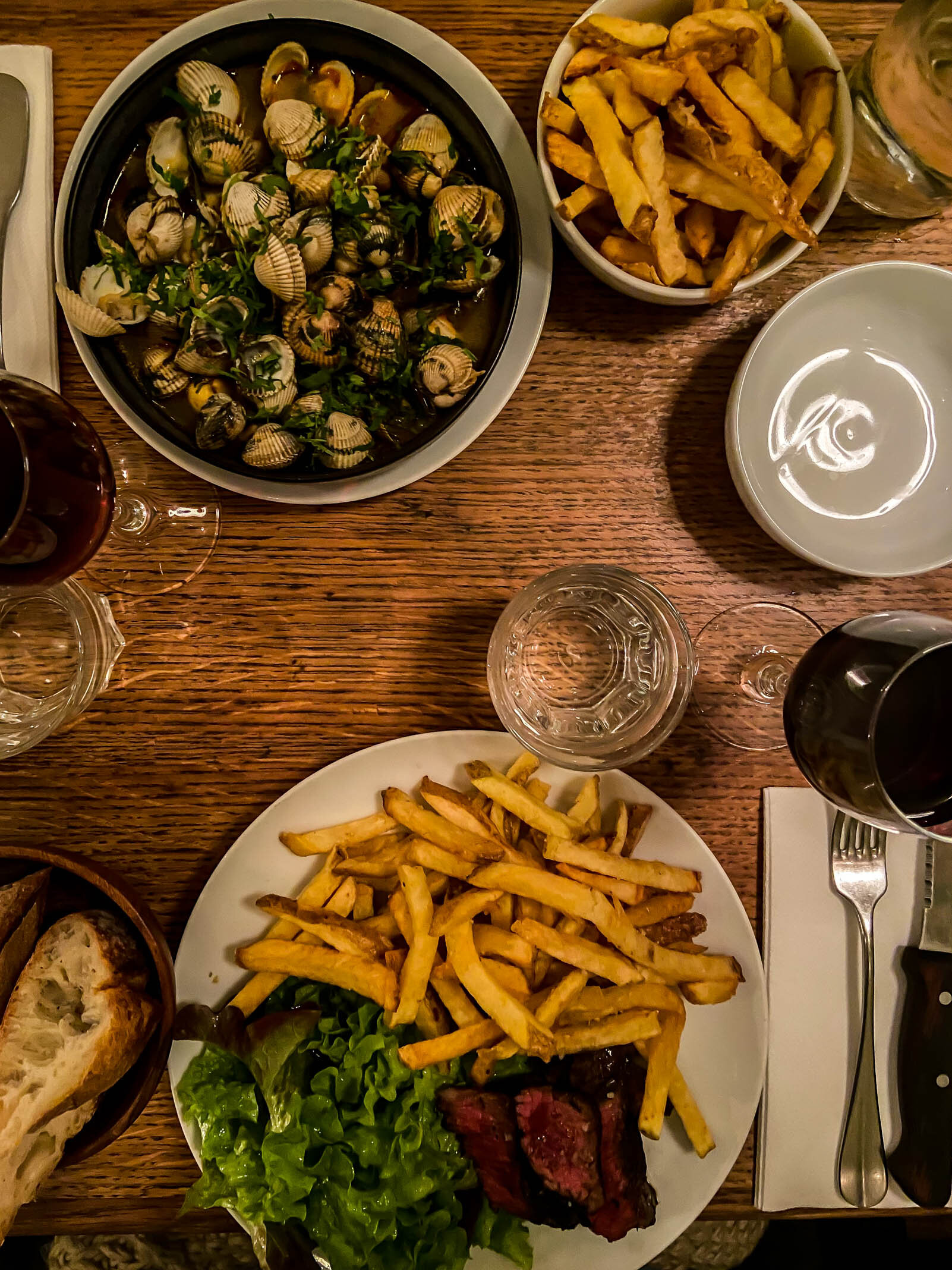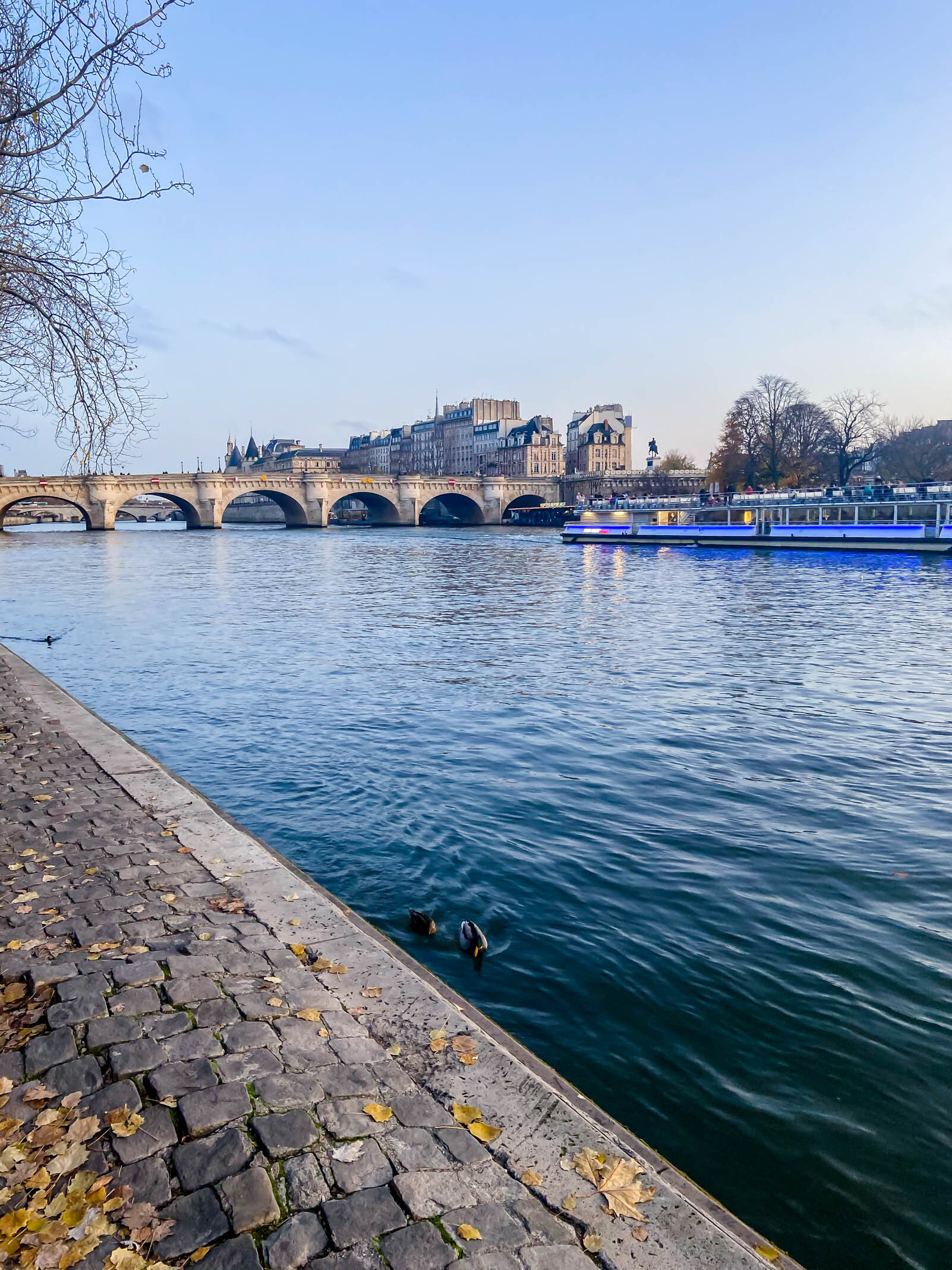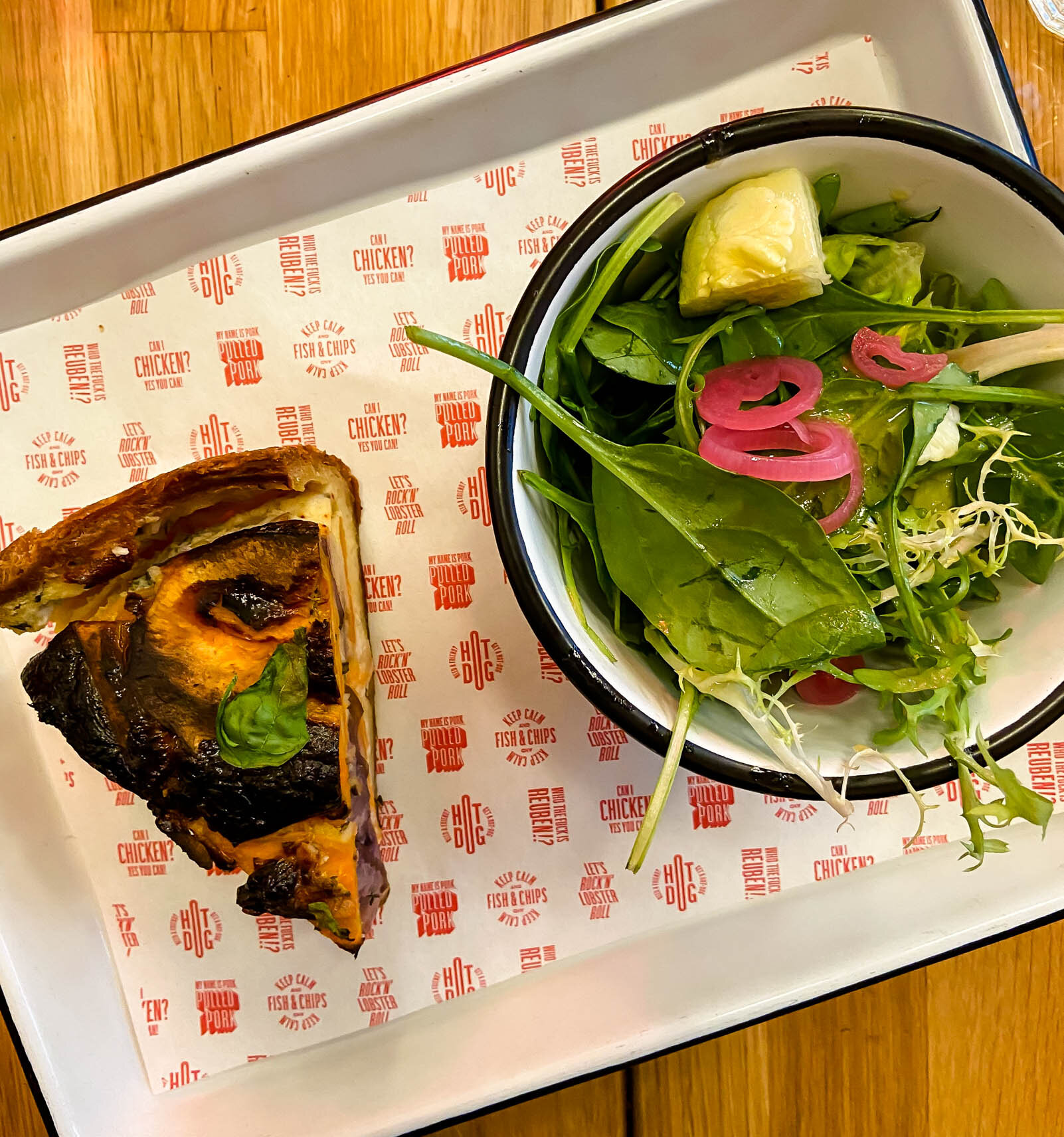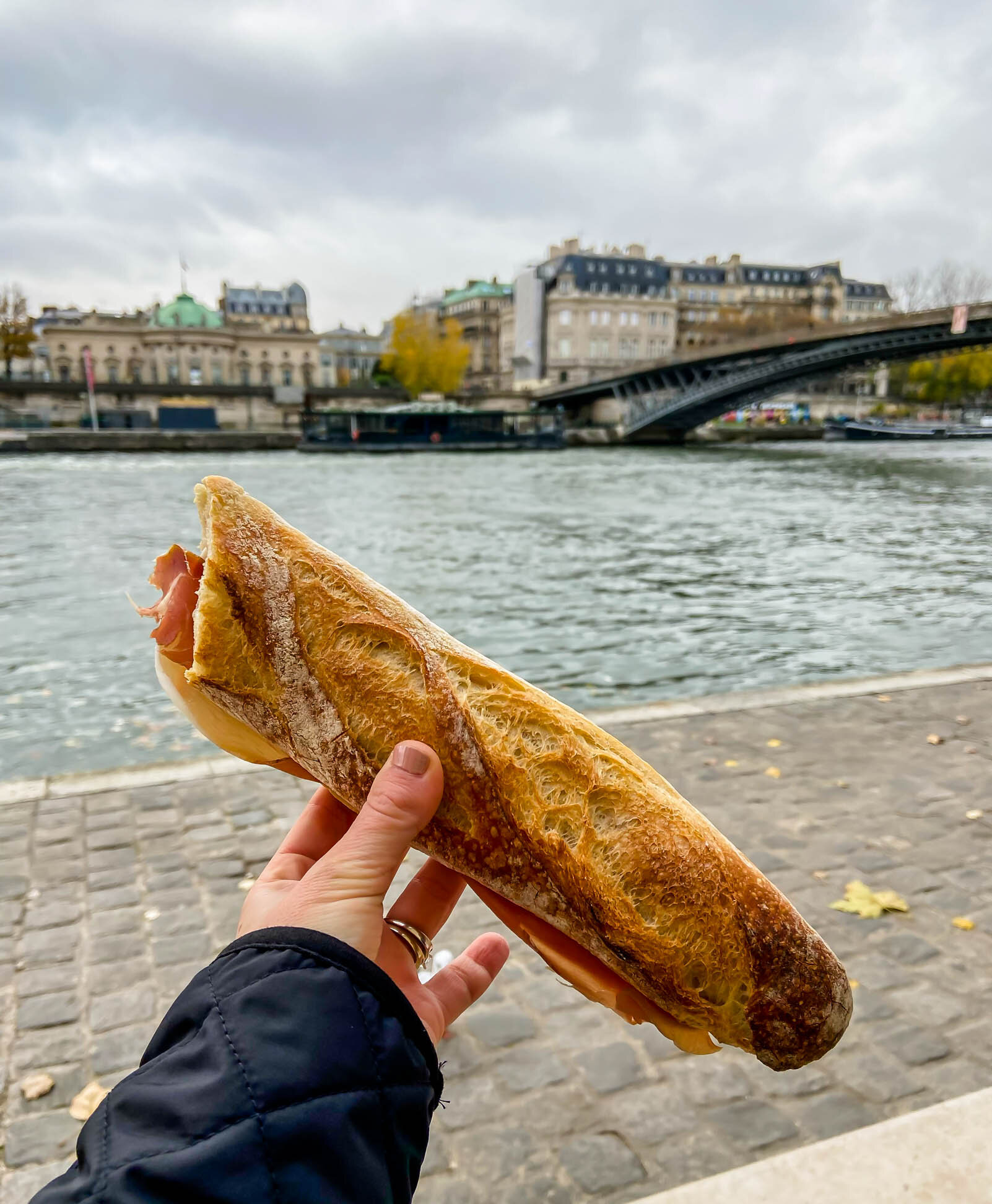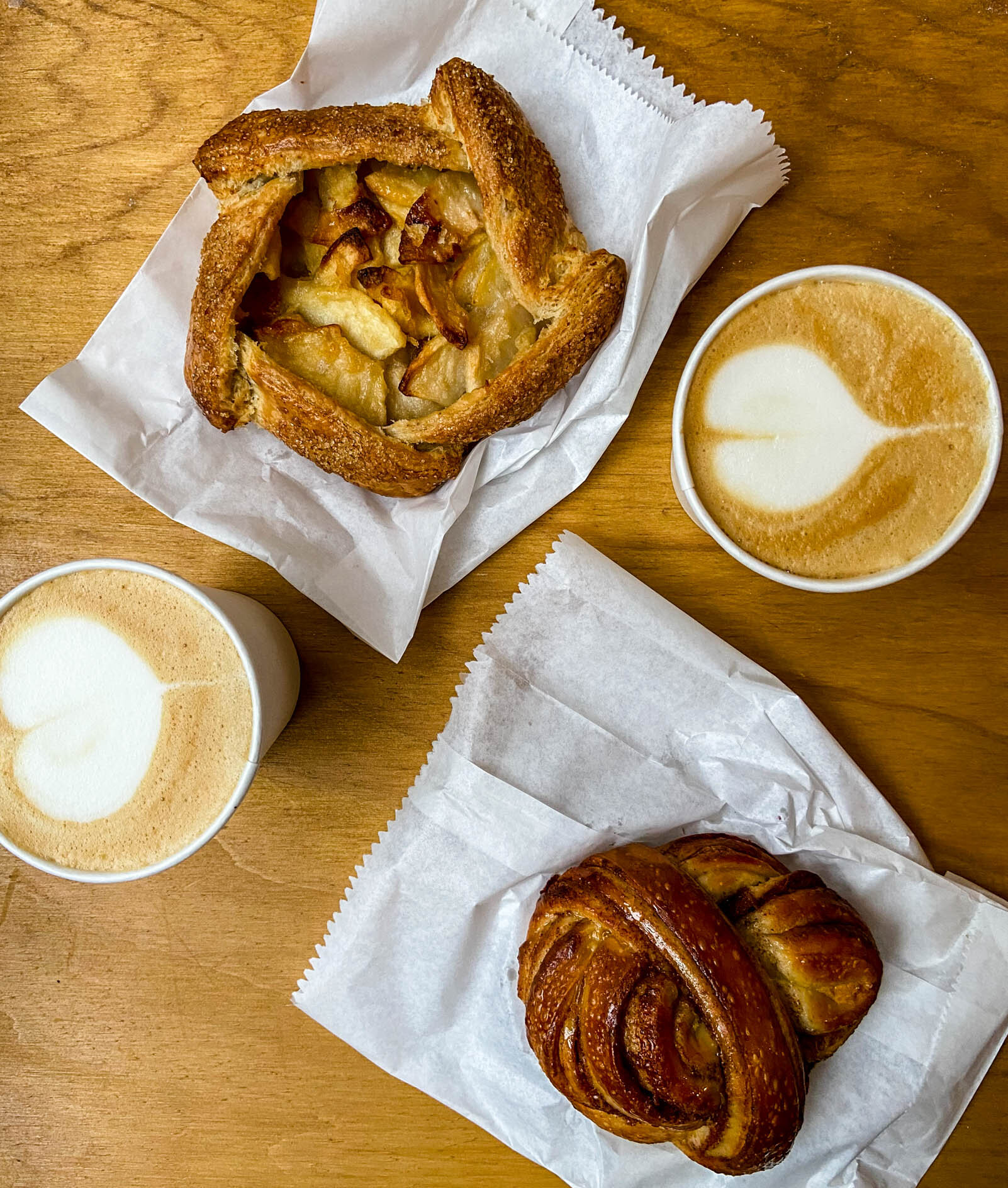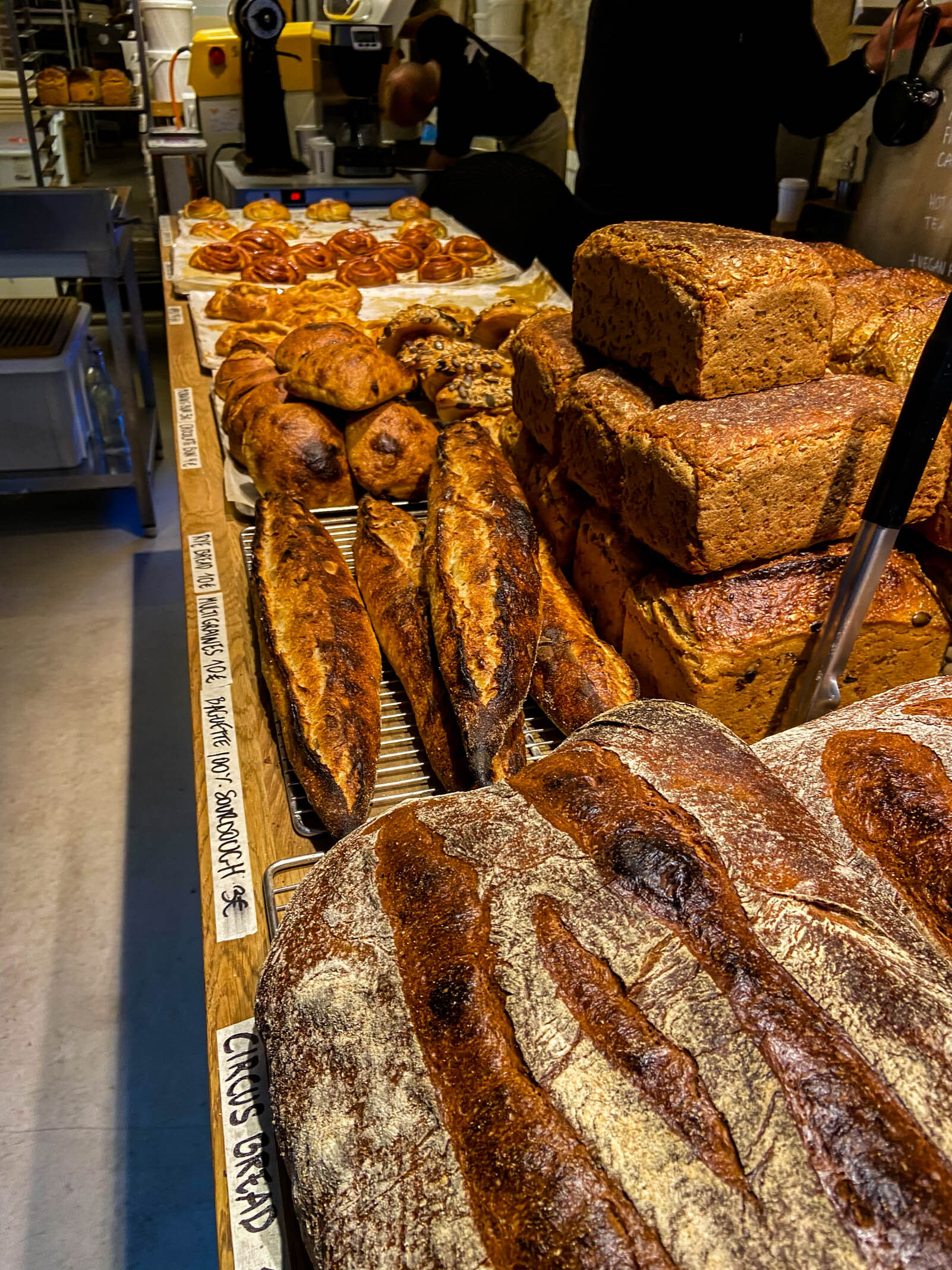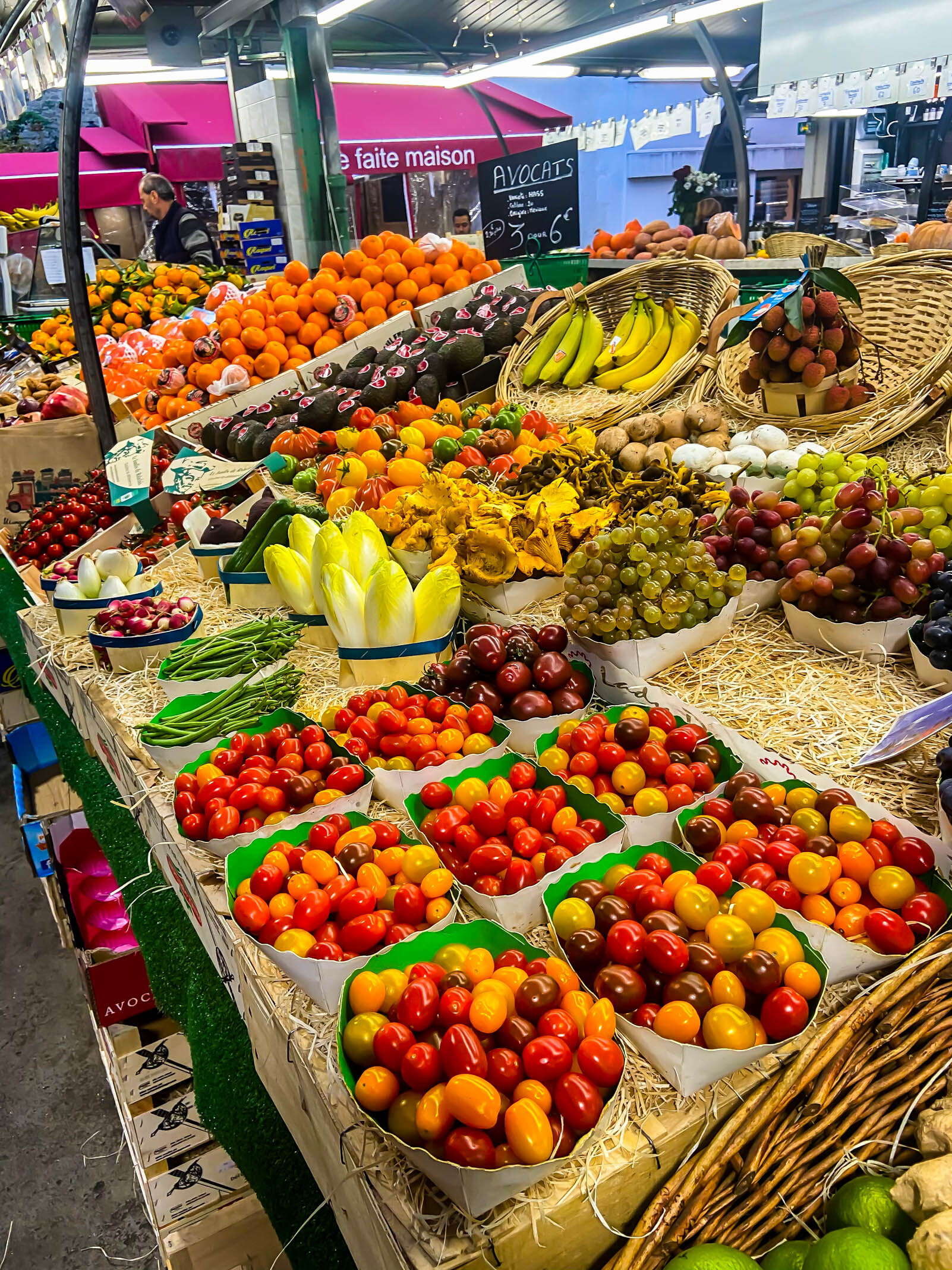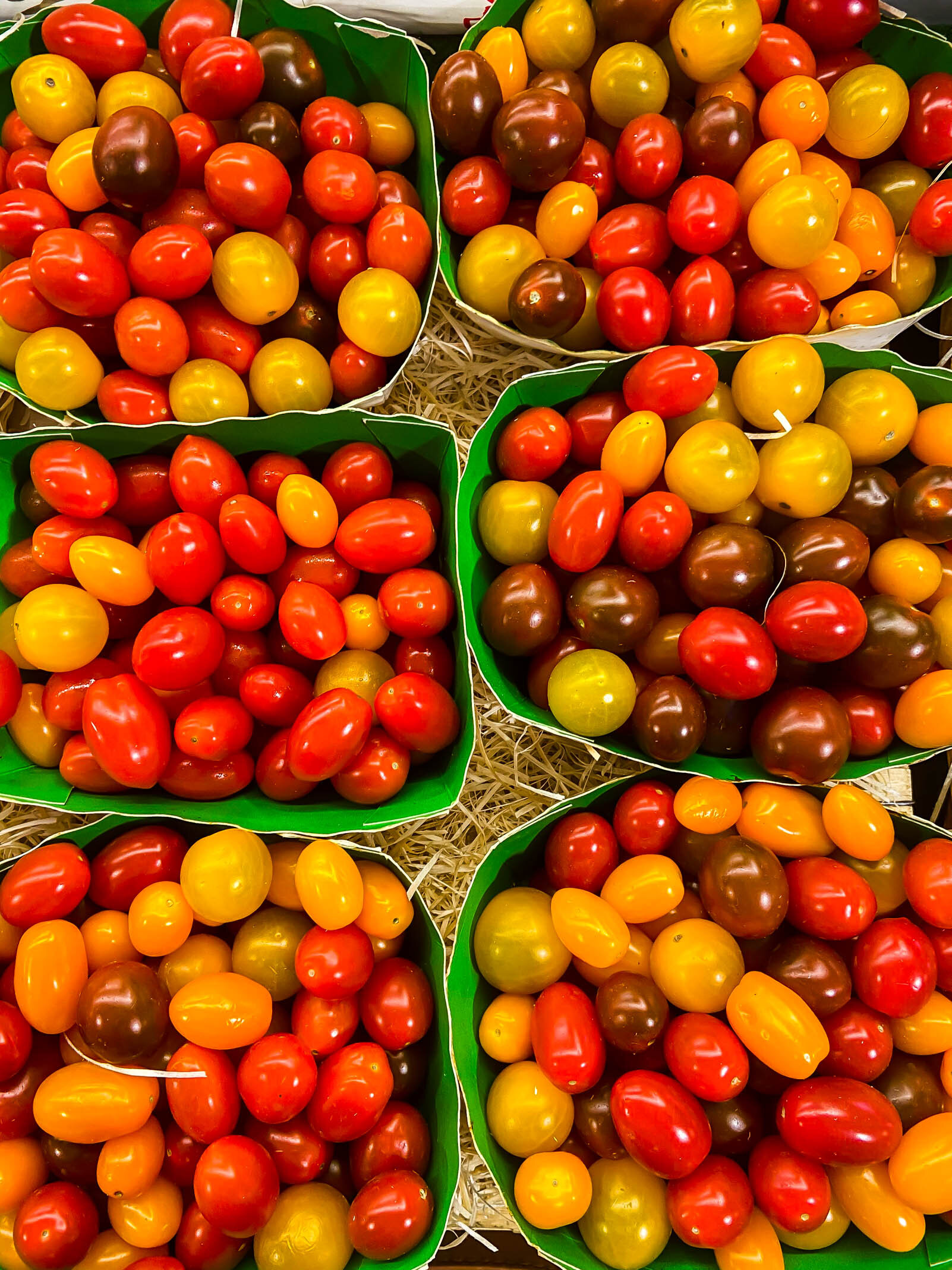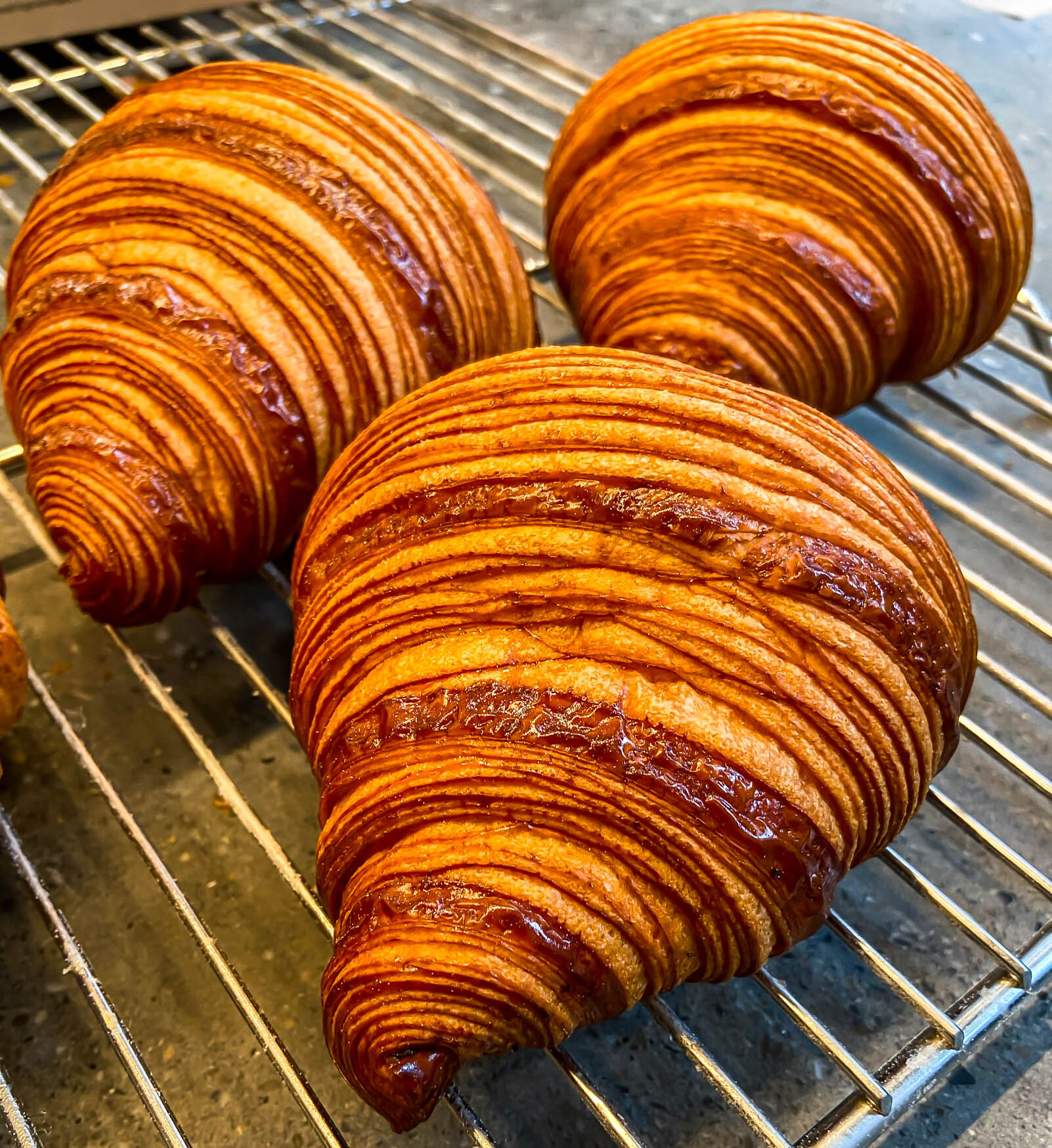Fig Butter and Blue Cheese Rugelach
/This post contains affiliate links.
The first few weeks of January are always filled with what I like to call “baking with scraps”. This consists of me, looking at all of the hodgepodge left in my refrigerator from the holidays and figuring out how I can repurpose it into something else so that it doesn’t go to waste. This year’s baking with scraps featured savory scones that used up a little bit of buttermilk on it’s last leg, half a block of cheddar cheese left by Christmas Eve macaroni, and lots of dill beginning to yellow at the tips. Cookies almost always make an appearance, as it seems they were made for stuffing with miscellaneous goodies. And we stumbled on this little rugelach. I was looking for a way to use up a jar of fig butter and a block of blue cheese in a way that didn’t involve creating another charcuterie board (I think we can all agree that we need a little reprieve from food on boards), and I thought of rugelach. Are they a cookie or a tart? I don’t know, but their flaky little crusts are perfect for stuffing with refrigerator scraps and they are also very cute. All-around winners in my book.
The rugelach dough recipe is from Sweet by Yotam Ottelenghi and Helen Goh and I have waxed poetic about this book’s greatness many times before. (Like here) The dough is easy to throw together and it turns out perfectly every time I make them. I’ve included some other variations at the bottom of the recipe in case your fridge doesn’t have fig butter and blue cheese hanging out in it, so feel free to make them your own! That’s the best part about #bakingwithscraps season!
Also, I made these on my Instagram story last week, so if you want a visual of the whole rolling/filling/shaping process, I’ve saved it to my highlights and you can head over there to check it out.
Fig Butter and Blue Cheese Rugelach
Yield: 24 small rugelach
Ingredients:
for the rugelach dough (recipe from Sweet)
1 1/4 cups (160 g) all purpose flour
pinch of salt
1/4 tsp baking powder
zest of one lemon
1/2 cup +1 T (125 g) unsalted butter, cold and cubed
4 1/2 oz (125 g) cream cheese, cold and cubed
for the filling:
4-5 tablespoons fig butter (or other thick, paste-like jam)
small block (about 2 oz) blue cheese
egg, for egg wash
demerara sugar, for sprinkling (optional)
Procedure:
to make the rugelach dough:
Combine flour, salt, baking powder, and lemon zest in the base of a food processor. Pulse a few times to combine. Add the butter cubes and continue to pulse for about 30 seconds, until the butter has broken up and the mixture has a coarse texture, similar to breadcrumbs. Add the cream cheese and process just until the dough begins to clump into a ball around the blade.
Turn the dough onto a lightly-floured work surface and push together with your hands. Knead a couple times, just to bring it together and then gently shape into a ball. (Be careful not to overwork your dough here to ensure flaky, pie-like texture in your final product.)
Divide the dough in two and wrap each round loosely in a piece of plastic. Use your hand to press into a disc and chill for at least an hour.
assembly:
Working with one disc at a time on a lightly-floured work surface, roll the dough into a circle, approximately 9” in diameter and about 1/8” thick. Use a cake pan or another large, circular item to trim the edges.
Use an offset spatula to spread half of the fig butter in a thin, even layer across the dough, reaching all the way to the edges. Sprinkle half of the blue cheese on top. Then, using a sharp knife or a pastry wheel, slice the dough like you would a pizza—into 12 even triangles.
Starting from the wider outside edge, roll each triangle tightly and transfer to a parchment lined baking sheet.
Repeat steps 1-3 with the remaining disc of dough and then transfer rolled rugelach to the refrigerate for at least 30 minutes before baking. Alternately, you can freeze the dough at this point for later use. To freeze, place your cookie sheet of dough in the freezer until rugelach are frozen solid (about two hours) and then transfer to a reusable bag.
to bake:
When you are ready to bake, preheat your oven to 400° F.
Combine egg and a splash of water or milk in a small beat and whisk until smooth. Brush each rugelach with egg wash and sprinkle with Demerara sugar.
Bake for 18-22 minutes, rotating halfway through, until rugelach are golden brown. Remove from oven and let cool on the baking sheet for at least 5 minutes and then transfer to a wire rack.
*Variations:
-I created these as a way to use up holiday charcuterie board leftovers so I used what I had on hand, but they are endlessly adaptable.
-If you want to go the fruit and cheese route: use any fruit jam you like (raspberry, blackberry, strawberry) in place of the fig butter, just make sure that you choose a jam that is thicker and more paste-like in consistency. Thin jams will spread too much and leak completely from the rugelach during baking (trust me, this has happened to me before and it’s a mess). Additionally, you can use any cheese you have on hand, but just be sure to think about it’s consistency. A cheese that is too melty will ooze out the sides and a cheese that is too firm won’t melt at all.
-The South Floridian in me thinks that guava paste and cream cheese would be an excellent choice, but I haven’t tried it yet, so if you do, let me know how it goes.
-The original recipe from Sweet uses quinces paste and toasted walnuts mixed with a little brown sugar and lemon juice. I think any nut/brown sugar combination would be delicious and would probably taste like baby cinnamon rolls.
-I’ve also made these with chopped up chocolate and they are simple and excellent. Let me know if you think of any other variations!
